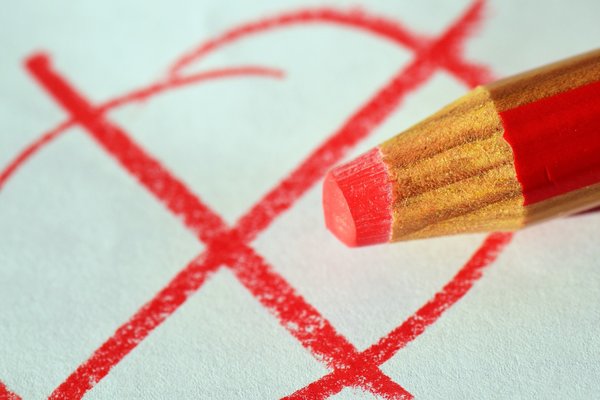What actually happens when you ask for evidence?
I’ve been Asking for Evidence for a couple of months now and it’s interesting how organisations respond to it. I’ve had an array of responses: Polite but dismissive….. First up [...]

“One of the most interesting and rewarding aspects of a politician's life is hearing the views of constituents. In the last couple of years there has been a growing trend for using petition websites that simply require a click of the mouse to register support or protest. This is not a problem if the information supplied to the clicker is well researched and referenced, but this is often not the case. I would urge the public to check the provenance of the information supplied by these websites to ensure that their views are being correctly represented.” - Julie Girling MEP
If you haven’t yet signed an online petition yourself, no doubt you’ve seen a few doing the rounds on social media. Their popularity reflects an increasing appetite for engagement in public life, and the ease with which online petitions can be created and gather supporters makes them accessible to many, and consequently a powerful force for change.
But what happens when statements made in online petitions are inaccurate or misleading?
I’ve been helping out with the Ask for Evidence campaign for the past three months. We’ve seen a rise in misleading petitions. We’ve heard from members of the public who have noticed those inaccuracies, and from policy makers who’ve been sent them. I decided to look into this further to get an idea of how widespread this is and what can be done. I started by looking at the current policies of petition sites. Very few mention evidence, and ways to ask for it are unclear and inconsistent.
Here are a few examples of petitions where the evidence behind the signatures is questionable. Last year, a petition started on change.org calling for a ban on the use of growth hormones in poultry farming in Michigan. However, growth hormones are already banned in U.S poultry, and have been since the 1950’s. The petition gathered thousands of signatures before it was amended to another goal; to end production of large chickens in poultry farming by genetic modification. This was another factual inaccuracy, as their large size is due to selective breeding. The petition goal was changed again, this time to improve poultry factory living conditions. This petition now has 60,000 signatures, but how many of these were gained on the basis of factual inaccuracies? In this example, the inaccuracies were clear enough to be challenged, and changed. But in other cases, misinformation can be much more subtle.
The Animal Justice Project, and later PETA, started a petition in 2015 calling to end a Malaria vaccine research study at the Karolinska Institute, which now has over 51,000 signatures. It claims that 120 monkeys will be infected with malaria and undergo invasive procedures, including bone marrow biopsies. But The Karolinska Institute say that 24 monkeys will receive the vaccine only, not malaria, and blood samples will be the only invasive procedure. As a biologist, I care deeply that misleading information about this trial is being presented and could provoke opposition of the study. Malaria killed over 400,000 people in 2015 - an effective vaccine would be a huge breakthrough.
A suite of other petitions on different topics have presented questionable information, such as a call to ‘Liberate Medical Innovation for All’. It focuses on an unlicensed product GcMAF which the petitioners present as an effective treatment for cancer, but has not been approved in the UK due to lack of evidence for its effectiveness and concerns that it could be dangerous. Current anti-fracking petitions continue to spread misleading claims about the dangers of fracking. Many of these claims, such as potential contamination of drinking water, were recently dismissed by the Advertising Standards Authority after Friends of the Earth used them on a campaign leaflet.
An archived UK government petition to oppose wind farms in Norfolk included several claims about the negative effects of wind turbines. This gathered almost 40,000 signatures, provoking a response from the government in which they outlined the importance of onshore wind turbines as a renewable energy source, countering each claim in the petition with cited evidence. More recently, a petition by the League Against Cruel Sports was lodged in 2016 to ban the use, sale and manufacture of snares and was discussed in the Welsh National Assembly. It turns out that government data was misused and the petition claimed that more mammals are snared in Wales each year than there are mammals in Wales! In both these examples, government time was used to discuss inaccurate petitions.
Petitions are potentially powerful tools. But if petitions start getting a reputation for being non evidence-based, they will lose credibility, and governments and others in power may start ignoring them. How can we tackle misinformation and make petitions more powerful? How can we hold petition makers accountable for their claims? And how can we all begin to look for the evidence behind petition claims, helping us to make informed choices on which campaigns to support? I decided to go directly to the petition sites to see if they could help.
At the moment, the policies concerning evidence on the popular petition sites are varied and unclear. When contacted, 38 degrees told me that they cannot check each of the large number of petitions they receive individually. They have a ‘Flag this Petition’ button which can be used if someone feels the petition is inaccurate, and then they will look at the content closely. Change.org have a similar approach. The UK government and parliament petition site states that it only considers petitions that aren’t false, deceptive or misleading. However, how these regulations are enforced is not clear. Care2petitions and Change.org also offer an easy way to remove a signature from a petition if people feel they have been misled.
As powerful activism platforms, petition sites could certainly do more to improve the quality of petitions and the accountability of those that create them. I’d like to see several things from each petition site:
- encouraging petition-makers to set out, where relevant, the evidence behind claims;
- an easy way for people considering signing a petition to see what evidence there is, or if it’s missing; and
- an easy way to question the evidence behind a petition.
I’m going to be asking the petition sites what they can do to take more responsibility for keeping their petitions on the right side of evidence-based. But in the meantime I’ve put together some guidelines on Asking for Evidence behind petition claims. If you’ve seen a petition on an issue you feel strongly about but want to be sure that it’s accurate before signing, here are some questions you might ask…
- Does the petition even need evidence? Not all petitions do – like those based on personal opinions or values, such as the one to preserve the BBC recipe archive, or to give Britain’s last surviving dambuster a knighthood.
- Does it already have an evidence base? Evidence can come in a range of forms, and usually involves statistics taken from research papers or reports. Is it easy for you to find this evidence? For example, have they cited documents or webpages which includes the original source of the information?
- If not, could you ask for evidence? There may be a means of contacting the person that started the petition to enquire about their claims. For help on how to ask for evidence, look at our guide to asking.
- Do you still have concerns about the accuracy of the petition? If so, you can try to flag it with the petition site moderators for further scrutiny.
Supporting a cause with the click of a mouse means online petitions have huge potential to raise awareness of important issues. A move towards greater accountability for evidence will help ensure that they remain meaningful and powerful in years to come.
Happy signing!
Image credit: Annonymous Collective CC by 2.0.

I’ve been Asking for Evidence for a couple of months now and it’s interesting how organisations respond to it. I’ve had an array of responses: Polite but dismissive….. First up [...]

After spotting a piece on the BBC news website which made claims about how cycling can improve your sense of well being I contacted one of the researchers behind the [...]

Politicians like to claim a lot of things, from how they’ve reduced unemployment to how they plan on investing in renewable energy, but how prepared are they to provide the [...]

Following an eye test at Vision Express, I was informed that although my level of myopia had not changed, there was a very small degree of astigmatism in one eye [...]

Flavourings, stabilisers and preservatives are all harmless additives that go into our food to help keep it fresh and tasty. So I started to get rather irritated when a number of [...]

In a TV advert for an Oral-B toothpaste, Countdown’s Rachel Riley explains that Pro-Expert is a ‘Smart Toothpaste’ because ‘it adapts to the specific issues in your mouth’. According to [...]